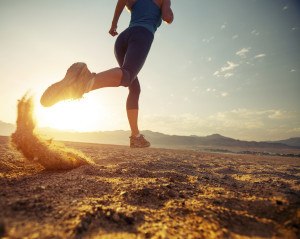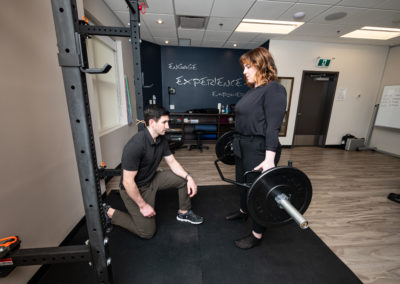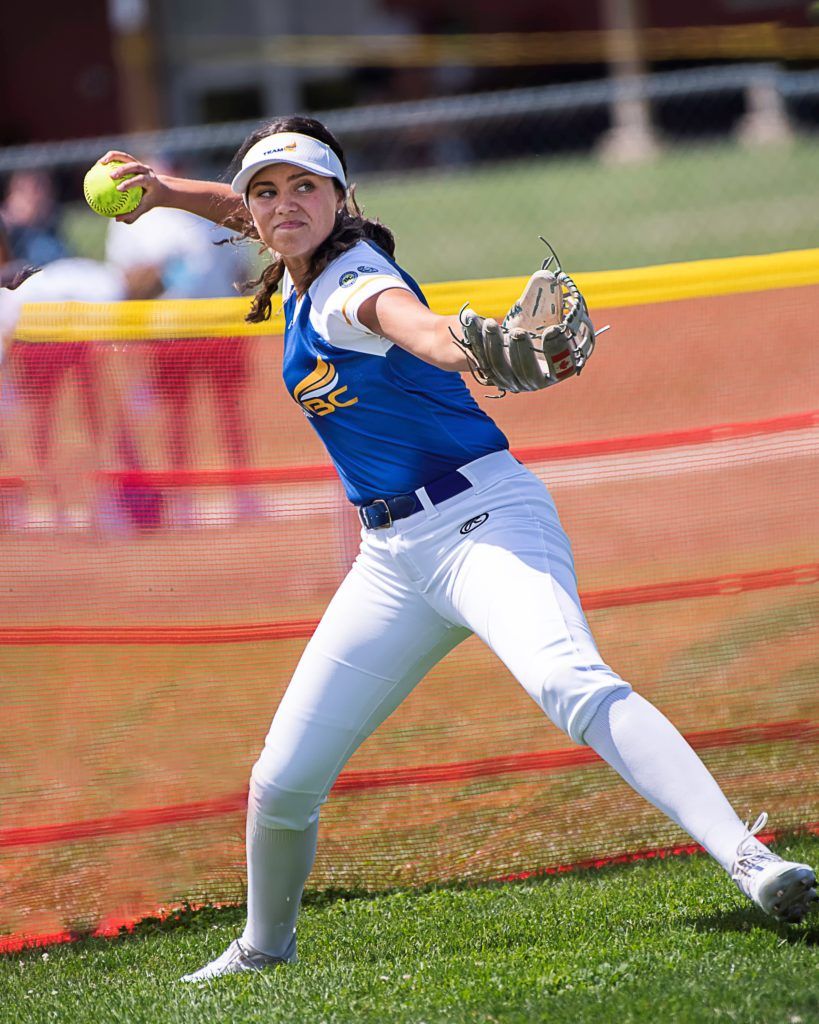
For those who are not familiar, barefoot running comes from the argument that humans have evolved over centuries to be able to run, and that early humans ran without shoes. As such, barefoot running is the most natural form of running our bodies are designed to do. Many barefoot running advocates suggest that the advent of traditional running shoes in the 1970’s has created a weaker foot that is less able to adapt which leads to running injuries [2]. There has been some discussion among researchers about what exactly we should be wearing on our feet (if anything) when we run. Fortunately, a review was recently published in the British Journal of Sports Medicine which may help shed some light on the issue.
The massive draw toward barefoot running centres around the idea that it promotes better foot strike, which is how your foot lands when it touches the ground. When you are running, the position of your foot as it contacts the ground determines how much force your leg absorbs. A common finding in the biomechanics studies is that a flatter more forward foot strike reduces the forces absorbed and may help decrease injury. This is because flatter forefoot contact distributes landing force over a larger surface area. This means less force and more cushioning on impact as compared to landing on your heel alone [1]. It is a commonly assumed that most barefoot runners use this forefoot striking pattern and most non-barefoot runners heel strike. In their review, Tam et al. (2013) found that this assumption is false and that “50% of runners participating in a 6-week minimalist running shoe intervention remained heel strikers.”
So why don’t all barefoot runners forefoot strike?
Motor adaptation and learning: There is a myth that suggests runners who naturally heel strike will become forefoot strikers when they switch from traditional to barefoot or minimalist shoes. This belief overlooks the adaptation period needed when switching to new barefoot or minimalist shoes. In their review, Tam et al. (2013) found that not all runners were able to naturally adopt a forefoot striking style when they first starting using new minimalist/barefoot shoes. Furthermore, for those runners that didn’t adopt the forefoot strategy immediately, there was an 8.6% increase in impact force on the foot when running barefoot [1]. The research is limited on whether changing your gait from heel striking to forefoot or midfoot striking is a skill that anyone can learn. However, it is clear that running well isn’t as simple as strapping on a new pair of shoes. For some of us, we will need to learn how to foot strike in a new way.
What you need to know to run well this year: It is important to understand what type of foot strike pattern you currently employ as a runner and how to change it if it isn’t right for you. Not every runner will do well in a single type of shoe (minimalist, barefoot, motion control). A physiotherapist can help determine what foot strike pattern (forefoot, midfoot etc.) is most optimal for you and how to safely incorporate this pattern into a new running routine and possibly a new shoe. Above and beyond the feet, the skill of running well is a task that requires the whole body to work in harmonious motion. The physiotherapists at Diane Lee and Associates are well equipped using the Integrated Systems Model (ISM) to assess how well your body is prepared to run. If you are unsure of how well you are running this year, do your body a favour and have an ISM assessment done.
[1] Tam N., Wilson J.L.A., Noakes T.D., Tucker R. (2013). Barefoot running: an evaluation of current hypothesis, future research and clinical applications. Best regards J Sports Med. 2014: 48:5 349-355. [2] Lieberman D.E., Venkadesan M., Werbel W.A., Daoud A.I., D’andrea S., Davis I.S., Mang’Eni R.O., Pitsiladis Y. (2010). Foot strike patterns and collision forces in habitually barefoot versus shod runners. Nature. 463, 531-535.







